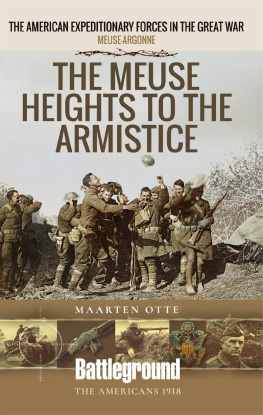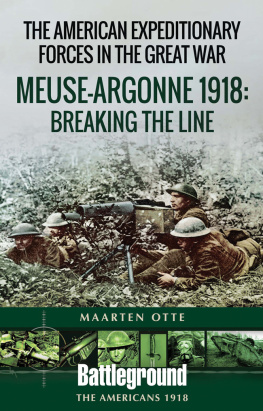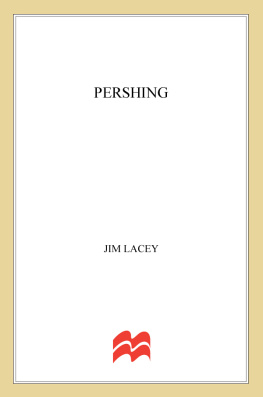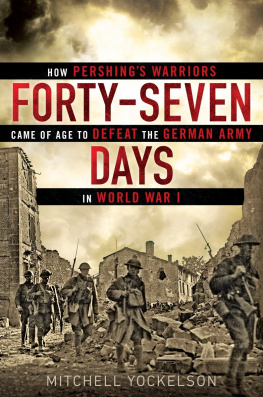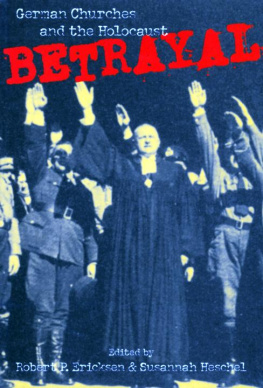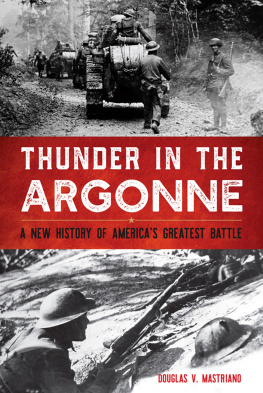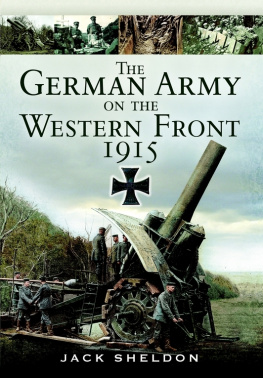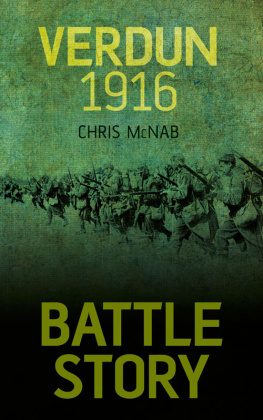An educator and a writer with a lifelong fascination for military history, William Walker grew up in Knoxville, Tennessee, exploring Civil War forts surrounding the city and interviewing veterans of foreign wars. After a forty-year career in college teaching and administration, he returned to his first love to investigate a pivotal event in Americas longest and bloodiest battleWorld War Is Meuse-Argonne Offensive.
After completing a BA with high honors and an MA in English at the University of Virginia, Walker undertook further graduate studies at Tulane University. He taught at the University of New Orleans and Lamar University in Beaumont, Texas. Moving from the classroom to academic administration, he served as associate vice president for public affairs at Virginia Tech, Gettysburg College, and the College of William and Mary in Williamsburg, Virginia.
The author lectures on World War I, leads battlefield tours, and teaches a course on the conflict as part of the lifelong learning program of the University of Virginia. Walker and his wife, Jan, live in Staunton, Virginia.
To examine additional photographs and maps, visit the website betrayalww1.com.
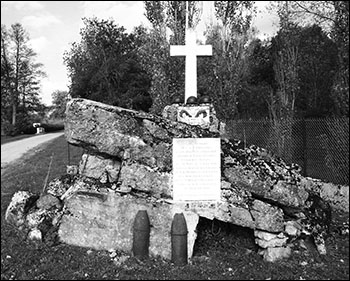
The destroyed German pillbox at Haucourt memorializes the French and American soldiers who assaulted the area.
Until I began researching and writing this book, I scoffed at lengthy acknowledgments. But over the course of the last twenty years, I have benefited from the support of so many people that I now fear leaving someone out. My sincere apologies to those I overlooked.
My principal debt is to Professor Edward Lengel of the University of Virginia, who lent me his skepticism. I asked the award-winning World War I historian to review my project with a critical eye, and for six months he did exactly that. Ed concluded that my research was sound and my findings accurate. He remains a valued mentor and friend.
A corps of wonderful friends read my drafts, proofed copy, and provided encouragement. They include Amy and Leigh Allen, Geoff Feiss and Nancy West, Andy and Jean Petkofsky, Jim and Ann Bill, Frank and Jarka Shatz, David Cowan, Mary K. LLewellyn, David Holmes, Carl Strikwerda, Paul Aron, Scott Nelson, Clare Song, Martin Townsend, Joel Hodson, John Shetler, Gretchen Long, Gina and Ned Andrew Solomon, Paul Cora, George Ray, Harvey Edber, Ted Hamady, Von Hardesty, and James Walker, my late uncle who landed on Omaha Beach on June 6, 1944. Other friends provided documents, photographs, and anecdotes, including Peter Parkin; Charlie and Cordie Puttkammer; the late Joseph Labrum Jr. and his son, Kingdon Gould; George Creel; Preston Manning; Ted Anthony; Earle Dunford; and Between the Covers Bookstore (Merchantville, New Jersey), which kindly furnished a copy of Jack Bentleys memoir. The illustrations were prepared by Gretchen Long of Staunton, Virginia.
I salute those in France who have walked the fields of memory with me: David Bedford, superintendent of the Meuse-Argonne American Cemetery; Jean-Paul DeVries, Rob van Zanten, and Maarten Otte, all excellent battlefield guides; Frederick Castier, Republic of France; Peter Folkers; and Ian and Carol Moore, who always provided a warm welcome, interesting conversation, and comfortable bed in Dun-sur-Meuse.
My deep appreciation goes to those who keep the torch burning at the Descendants and Friends of the 314th Regiment, including Nancy Schaff, Joel Rentz, John Shetler, Tony Patti, and Joseph Labrum III.
I owe a vast debt to archivists and librarians: Robin Wagner and Alice Huff at Gettysburg College; Timothy Nenninger, Mitchell Yockelson, and others at the US National Archives in College Park, Maryland; and helpful professionals at the Library of Congress, National World War I Memorial, US Army Center for Military History, College of William & Mary Library, the Hoover Institution, Historical Library of Maryland, Pennsylvania Historical Society, Woodrow Wilson Presidential Library, Mary Baldwin College Library, and the 79th Division Museum at Fort Meade.
I am deeply grateful to my agent, John Silbersack, of Trident Media Group, who guided the project and secured a wonderful publisher. Colin Harrison, my editor at Scribner, added immeasurably to the final product; I appreciate his confidence, sensitivity, guidance, and friendship, and that of his able assistants, Katrina Diaz and Sarah Goldberg. Charlie Euchner, a superb coach and author of the Writing Code , provided critical assistance and encouragement.
Finally, I acknowledge gratefully the inspiration of three family members. Years ago, my grandmother Bessie McGill Walker fostered my love of military history by reading me Old Testament battle stories, with their insights into human motivation. My daughter, Lara W. Kessler, offered encouragement, editorial advice, and, most importantly, motivation by declaring at my retirement, Your career is over, Dad; now you can relax. That inadvertent nudge, as well as her personal courage and persistence, will forever challenge me.
Ultimately, my greatest debt is to my wife, Jan LLewellyn Walker, who has always believed. She accompanied me on the winding path of an academic career, along the way becoming my indispensable proofreader, battlefield strider, trench jumper, bunker crawler... and best friend.
APPENDIX
Organization Chart American Expeditionary Forces (September 1918)
Unit | Personnel | Sub-Units | CO rank | Commander(s) |
AEF | 2 million | 1 army | General (4-star) | Pershing |
First US Army | 1.2 million | 3 corps | Lt. General (3-star) | Pershing* |
Corps | 112,000 | 4 divisions | Maj. General (2-star) | Liggett (I), Bullard (III), Cameron (V) |
Division | 28,000 | 2 brigades | Maj. General (2-star) | Kuhn (79th) |
Brigade | 8,134 | 2 regiments | Brig. General (1-star) | BG Nicholson (157th), BG R. H. Noble (158th) |
Regiment | 3,699 | 3 battalions | Colonel | Col. Sweezey (313th), Col. Oury (314th), Col. Knowles (315th), Col. Charles (316th) |
Battalion | 1,027 | 4 companies | Major | Maj. Parkin (1st Batt. of 316th) |
Company | | 4 platoons | Captain | Capt. Hewit (F Co. 316th) |
Platoon | | 5 squads | Lieutenant | Lt. Goetz |
Squad | | Sergeant | Sgt. Cabla |
. During the Meuse-Argonne Offensive, Pershing served concurrently as commanding officer of the AEF and commanding officer of the First US Army.
. Lieutenant General (3-star) would normally command an army.
. Cameron relieved October 12, 1918.
. Noble relieved by Knowles and Oury September 27, 1918.
. Charles relieved by Lieutenant Colonel R. L. Meador September 27, 1918, and by Williams ca. October 15, 1918.



